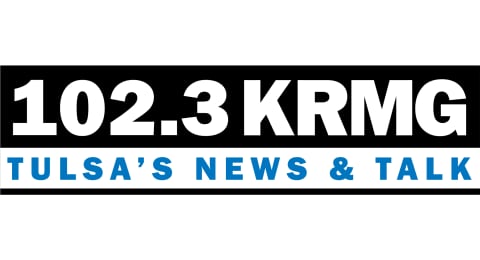TULSA — Research into using a three-dimensional network of weather sensing drones to enhance storm prediction and tracking has begun making progress, and the Tulsa region is at the heart of the effort.
That’s largely due to the work of Steve Piltz, Meteorologist-in-Charge at the National Weather Service Office in Tulsa.
The drones are built by a company called GreenSight, based in Boston, Piltz tells KRMG.
“NOAA (the National Oceanic and Atmospheric Administration) is intrigued by some of their technology, so they’ve actually signed a formal agreement that says that I can work directly with GreenSight, which is not normal for the government,” Piltz told KRMG.
He says having readings taken from various altitudes will give forecasters and storm trackers a much clearer picture of conditions, and help make their models much more accurate.
“Observations are key, and while everybody likes to talk about the computer models and all the things that go on there, all of it starts with observing the atmosphere first,” Piltz said. “And so the more data you can put into the models, the better.”
However, clouds of weather-sensing nano drones would present a potential hazard for other aircraft.
“The biggest sticking point that we have going forward is just how do you integrate all of this into the air space without causing a hazard with aviation,” Piltz said.
Monday, Rep. Frank Lucas (R-Okla.) and Senator Markwayne Mullin (R-Okla.) announced a $5.5 million grant for Oklahoma State University to study that issue.
Their joint statement is included below:
The National Institute of Standards and Technology (NIST) awarded Oklahoma State University (OSU) $5.5 million as part of the Consolidated Appropriations Act of 2024. The purpose of these funds is to increase knowledge about local weather systems in the lower atmosphere, enabling the safe integration of small Unmanned Aerial Vehicles and Advanced Air Mobility aircraft into the National Airspace System.
Senator Mullin (R-OK) and Representative Lucas (OK-03) were the sponsors of the congressionally directed spending that made this funding possible. NIST’s authority is under the jurisdiction of the House Science, Space, and Technology Committee, of which Congressman Lucas serves as Chairman. This project also received support from Stillwater Mayor Will Joyce and Payne County Commissioner Chris Reding.
“I’ve been proud to see my Alma Mater –Oklahoma State University – take initiatives in the aerospace industry and weather data sciences. I’ve spoken with President Shrum about the immense progress being made on campus in recent years, and it’s clear this community funded project will only further its impact,” said Congressman Frank Lucas. “Those of us in Oklahoma know firsthand how important accurate weather predictions are to our livelihoods, and the funding made possible by this congressionally directed spending will enable OSU to take great strides in enhancing weather prediction through Unmanned Aircraft Systems. I’d like to thank President Shrum for her efforts and am excited to see what positive results this project will bring to our state.”
“Oklahoma State University is leading the way in the aerospace and aviation industry,” said Senator Markwayne Mullin. “These funds will allow their innovation to continue as they expand research into weather sensors in commercial Unmanned Aerial Vehicles and Advanced Air Mobility aircraft. I’m thrilled to share this news, and I also want to thank President Shrum for her leadership.”
“On behalf of Oklahoma State University and its Oklahoma Aerospace Institute for Research and Education (OAIRE), I would like to personally thank Senator Mullin and Representative Lucas for their support and tireless work in securing vital funding to further establish methods to standardize and trace commercial Unmanned Aerial Systems (UAS) and Advanced Air Mobility (AAM) atmospheric measurements,” said OSU President Kayse Shrum. “This funding will provide enormous benefit to Oklahoma and the nation through facilitating the safe and sustainable integration of small Unmanned Aircraft Systems and Advanced Air Mobility into the National Airspace System. The enhanced coverage and precision of low-altitude weather data this project will provide will offer significant benefits to the helicopter-based Emergency Medical Services community operating within the same airspace, helping to lessen their operational risks. The meteorology community will be able to leverage this data to refine weather products and extend warning times for potentially hazardous conditions contributing to critical safety measures being employed. Oklahoma State University’s OAIRE is a national leader in aerospace and aviation research and education and we are proud to be involved in this important project and owe Sen. Mullin and Rep. Lucas a debt of gratitude for making it possible.”
BACKGROUND
· The objective of this project is to increase knowledge about local weather systems in the lower atmosphere, enabling the safe integration of small Unmanned Aerial Vehicles and Advanced Air Mobility aircraft into the National Airspace System.
· The researchers will create a method to standardize and trace commercial UAS and Advanced Air Mobility (AAM) atmospheric measurements. The project will develop protocols and standards for the Unmanned Aircraft Meteorological Data Report. The project will also evaluate existing maintenance operations that may support AAM operations, particularly related to weather impacts related to severe weather and fire. The researchers will also develop curricula to help the aviation community apply the new technology.
· This project will demonstrate a novel, cost-effective method to support the integration of weather sensors in commercial UAS and AAM aircraft. The proposed system is essential for gathering local weather data and establishing a weather information dissemination network. The project will demonstrate dynamic path planning based on local weather data.
This project facilitates the safe and sustainable integration of small Unmanned Aircraft Systems and Advanced Air Mobility into the National Airspace System. The technological advancements will also benefit the broader aviation community. The enhanced coverage and precision of low-altitude weather data offer significant benefits to the helicopter-based Emergency Medical Services community operating within the same airspace, helping to mitigate their operational risks. The meteorology community will be able to leverage this data to refine weather products and extend warning times for potentially hazardous conditions contributing to safety measures for various stakeholders within the airspace ecosystem.







